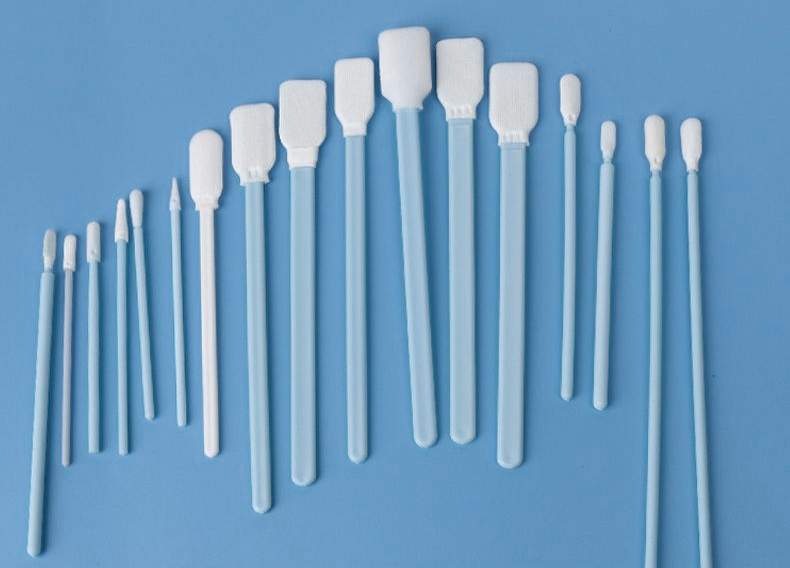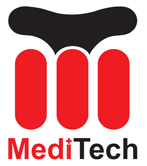Swabs Cleanroom เป็นเครื่องมือที่จำเป็นสำหรับการทำความสะอาดพื้นผิวในสภาพแวดล้อมที่ควบคุมได้, เช่นห้องทำความสะอาด. Swabs สะอาดแตกต่างจากผ้าฝ้ายธรรมดาเพราะทำความสะอาดในห้องทำความสะอาดและบรรจุลงในถุงหลังการรักษาทำให้บริสุทธิ์. ออกแบบมาเป็นพิเศษเพื่อลดโอกาสเกิดขุยและสารตกค้างอื่นๆ, ท่ามกลางคุณสมบัติพิเศษอื่น ๆ.

เมื่อเลือก swab ห้องทำความสะอาด, มีคุณลักษณะของผลิตภัณฑ์บางอย่างที่ต้องพิจารณา. จุดสนใจที่สำคัญและทั่วไปอย่างหนึ่งในห้องทำความสะอาดทุกห้องคือการ จำกัด อนุภาคอากาศในอากาศ. ควรเลือก Swab ที่เหมาะสมเพื่อให้แน่ใจว่าสภาพแวดล้อมไม่ได้ถูกบุกรุก. ต่อไปนี้เป็นปัจจัยบางอย่างที่ควรพิจารณาเมื่อเลือก Swab ห้องทำความสะอาด:
- ความสามารถในการดูดซึม: Swab ควรจะสามารถดูดซับสารทำความสะอาดหรือสารปนเปื้อนของเหลวที่จะใช้กับ.
- การเป็นผ้าสำลี: Swab ไม่ควรทิ้งสารตกค้างหรือเส้นใยที่สามารถปนเปื้อนพื้นผิวที่ถูกทำความสะอาด.
- ความขัด: Swab ไม่ควรเกาหรือทำลายพื้นผิวที่ทำความสะอาด.
- ความต้านทานสารเคมี: Swab ควรจะสามารถทนต่อสารเคมีที่ใช้กับได้.
- การปล่อยประจุไฟฟ้าสถิต (ไฟฟ้าสถิตย์) คุณสมบัติ: Swab ไม่ควรสร้างกระแสไฟฟ้าแบบคงที่ซึ่งอาจสร้างความเสียหายต่ออุปกรณ์ที่ไวต่อ.
มือจับ Swab Cleanroom สามารถทำจากวัสดุที่แตกต่างกัน, รวมถึงไม้, โพรพิลีน, และกระดาษ. แต่ละวัสดุมีประโยชน์และแอปพลิเคชันของตัวเอง. กระดาษแข็ง, ทำความสะอาด, และสร้างการก่อสร้างแบบ "สีเขียว". อย่างไรก็ตาม, มันมีอนุภาค, ดังนั้นโดยทั่วไปจึงไม่แนะนำสำหรับห้องทำความสะอาด.
เคล็ดลับ Swab Cleanroom มาในรูปทรงที่แตกต่างกัน, รวมถึงแหลม, เป็นรูปสี่เหลี่ยมผืนผ้า, และเกลียว, เพื่อช่วยเหลือผู้ใช้ในการทำความสะอาดหรืองานแอปพลิเคชันเฉพาะ. ตัวเลือกที่เลือกจะขึ้นอยู่กับความจำเป็นในการดูดซับสารทำความสะอาดหรือสารปนเปื้อนของเหลว, การเสียดสีที่อนุญาตและศักยภาพในการเป็นขุย, และคุณสมบัติอื่น ๆ. Foam Swabs เป็นที่รู้จักกันดีในเรื่องการดูดซับสูงและคุณสมบัติการให้คะแนนต่ำ. ผ้าฝ้ายเป็นสิ่งที่ดีสำหรับการทำความสะอาดทั่วไป, ในขณะที่ swabs ไมโครไฟเบอร์เหมาะสำหรับการทำความสะอาดชิ้นส่วนขนาดเล็กหรือพื้นที่ที่เข้าถึงได้ยาก.
ผู้ผลิต Swab ทำความสะอาด มีการระบุและประเมินผลผ้าและวัสดุใหม่อย่างต่อเนื่อง, เช่นเดียวกับการทำงานเพื่อปรับปรุงประสิทธิภาพ, คุณภาพ, และความสะอาดของกระบวนการผลิตของพวกเขา. ซัพพลายเออร์ Swab และเช็ดที่สำคัญไม่ได้ผลิตวัสดุ, ซึ่งหมายความว่าพวกเขาจะต้องพึ่งพาความพยายามในการพัฒนาของซัพพลายเออร์สิ่งทอและโฟม. ให้ขนาดค่อนข้างเล็กของตลาด, แอพพลิเคชั่นสะอาดไม่ได้รับส่วนแบ่งการวิจัยจาก บริษัท เหล่านี้. แทน, เช็ดผู้ผลิตส่วนใหญ่ตอบสนองความต้องการห้องทำความสะอาดที่สำคัญผ่านการประมวลผลมูลค่าเพิ่มของวัสดุทั่วไปในสภาพแวดล้อมที่ควบคุม, ส่วนใหญ่, กระบวนการฟอกที่เป็นกรรมสิทธิ์.
สรุปแล้ว, เมื่อใช้ swabs cleanroom, จำเป็นต้องเลือก Swabs ที่ตอบสนองความต้องการเฉพาะของแอปพลิเคชัน. Swabs สะอาดเป็นพิเศษเพื่อลดศักยภาพของผ้าสำลีและสารตกค้างอื่น ๆ, ท่ามกลางคุณสมบัติพิเศษอื่น ๆ. เมื่อเลือก swab ห้องทำความสะอาด, ควรพิจารณาวัสดุเคล็ดลับและเพลา, เช่นเดียวกับความสามารถในการดูดซับ, การเป็นผ้าสำลี, ความขัด, ความต้านทานสารเคมี, และคุณสมบัติ ESD. Foam Swabs เป็นที่รู้จักกันดีในเรื่องการดูดซับสูงและคุณสมบัติการให้คะแนนต่ำ, ในขณะที่ผ้าฝ้ายเป็นสิ่งที่ดีสำหรับการทำความสะอาดทั่วไป. ผู้ผลิต SWAB ในห้องทำความสะอาดมีการระบุและประเมินผลผ้าและวัสดุ SWAB ใหม่อย่างต่อเนื่อง, เช่นเดียวกับการทำงานเพื่อปรับปรุงประสิทธิภาพ, คุณภาพ, และความสะอาดของกระบวนการผลิตของพวกเขา.
 คลีนรูมโฟม Swabs, โพลีเอสเตอร์ Swabs, ผู้ผลิตชุดทำความสะอาดเครื่องพิมพ์ – เมดิเทค
คลีนรูมโฟม Swabs, โพลีเอสเตอร์ Swabs, ผู้ผลิตชุดทำความสะอาดเครื่องพิมพ์ – เมดิเทค